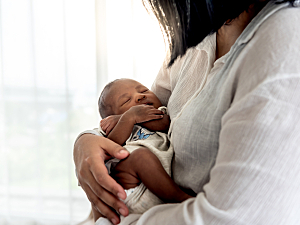There may be an increased risk of postpartum infections in women with inflammatory bowel disease (IBD) due to underlying inflammation and immunosuppressive use.
To address this critical knowledge gap, Sonia Friedman, MD, and Bente Mertz Nørgård, MD, PhD, DMSc, gastroenterologists in the Crohn’s and Colitis Center at Brigham and Women’s Hospital, and colleagues recently conducted the first study on the issue that examined a wide spectrum of infectious complications and included a non-IBD control group. Their report in Inflammatory Bowel Diseases documents a higher risk of postpartum infections in women with IBD regardless of the mode of delivery.
Methods
The researchers consulted national health registries in Denmark, which are valuable for epidemiologic research because access to healthcare is free and reporting to the registries is mandatory. The population for this study was women who delivered a singleton, live-born child between January 1, 1997, and December 31, 2015:
- Caesarian deliveries: 3,255 in women with IBD (56% elective) and 207,608 in women without IBD (41% elective)
- Normal vaginal deliveries: 5,771 in women with IBD and 793,110 in women without
- Assisted vaginal deliveries: 654 in women with IBD and 81,132 in women without
Women with and without IBD were of similar ages and weights in each group.
Risk of Infection by Type of Delivery
Caesarian delivery
4.5% of women with IBD and 3.7% of women without IBD who had a Caesarian section developed an infectious complication within 30 days after delivery. Women with IBD, compared to those without IBD, were at significantly increased risk of:
- Infections of the gastrointestinal tract—adjusted OR (aOR), 4.36; 95% CI, 2.34-8.10)
- Infections of the skin and subcutaneous tissue—aOR, 4.45; 95% CI, 2.30-8.59)
- Overall infections—aOR, 1.83; 95% CI, 1.35-2.47
Even after adjustment for emergency versus elective Caesarian delivery, there were more postpartum infections in women with IBD than in those without IBD.
A total of 330 women with IBD who delivered by Caesarian section had received immunosuppressive medications within six months before delivery, compared to 2,925 who did not receive immunosuppressives. The infection risk was not increased in women with immunosuppressive use (crude OR 0.59; 95% CI, 0.18-1.90).
Vaginal delivery
1.6% of women with IBD and 1.3% of women without IBD had an infectious complication within 30 days. Women with IBD had a significantly increased risk of GI tract infections compared to those without IBD (aOR, 3.17 ; 95% CI, 1.47-6.85).
Assisted vaginal delivery
In women with assisted vaginal delivery, there were very few outcomes in most infection categories, so adjusted analyses weren’t possible.
Caesarian vs. Vaginal Delivery in IBD
Compared to women with IBD who delivered vaginally, women with IBD who had a Caesarian were at significantly increased risk of:
- Puerperal sepsis—aOR, 1.92; 95% CI, 1.05-3.52
- Other puerperal infections—aOR, 3.63; 95% CI, 2.37-5.57
- GI tract infections—aOR, 2.71; 95% CI, 1.01-7.25
- Infections overall—aOR, 2.36; 95% CI, 1.51-3.71
Applying the Findings
Women with IBD can be counseled that having a Cesarean section increases the risk of infection compared with vaginal delivery, although vaginal delivery itself is associated with a substantial risk of GI infection. Physicians should carefully monitor their patients after delivery to minimize infectious complications.
